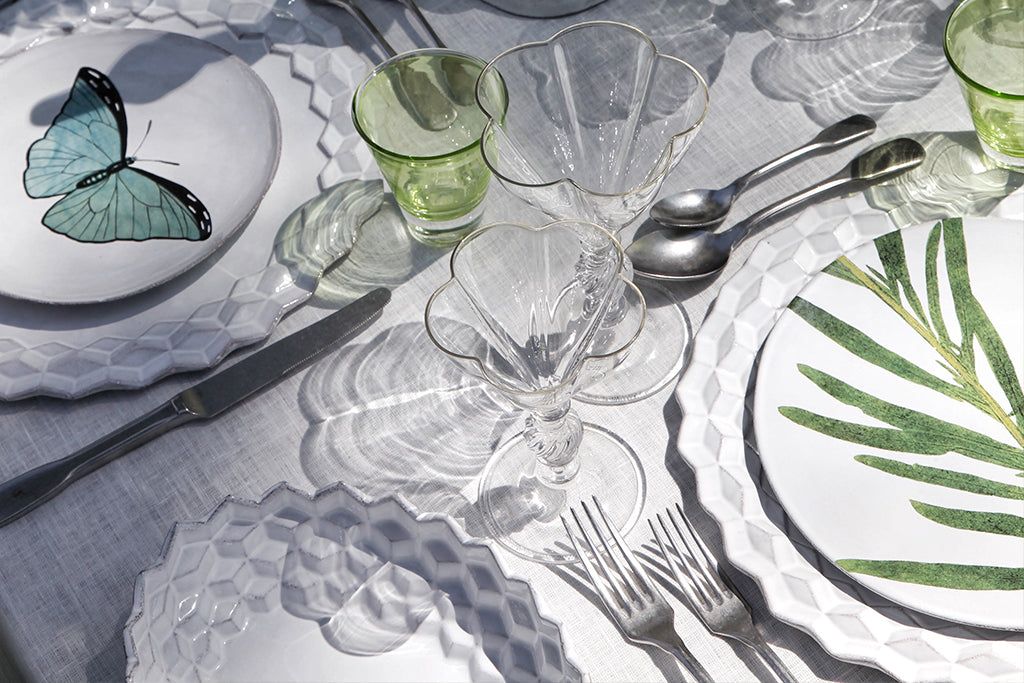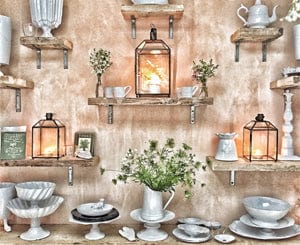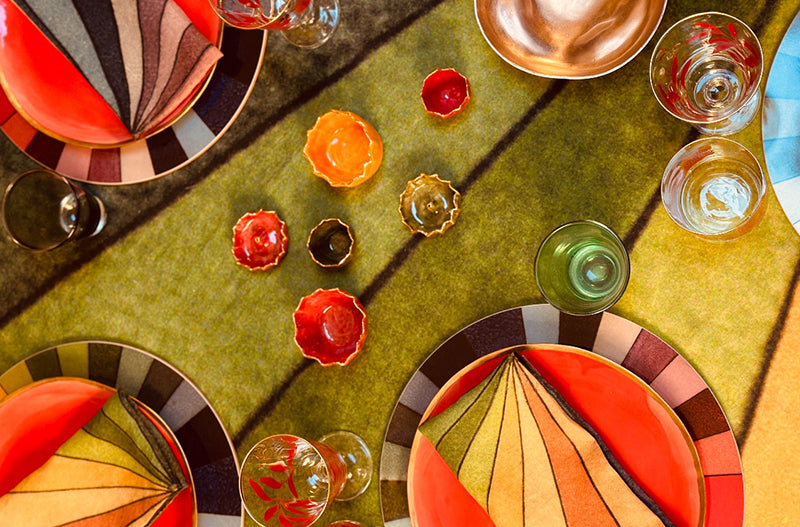Meanderings
Celebrate with Les Airelles
/ 30 November, 2025Merriment & Mistletoe
/ 29 November, 2025A Picture Perfect Thanksgiving
/ 25 November, 2025
The Tablecloth: A Little History
Which subject did you excel in at school? Was it Maths, Science, Art, English? It probably wasn't history of tablecloths that's for sure, but not to worry, it just so happens to be an S&B specialist subject... Today, we're taking you back in time, to a few key points in tablecloth history, to trace where our love affair with linen began.
Indulge us for a moment and we hope you enjoy these little tablecloth truths...
With love,
S&B
x
[ "Tovaglie Perugine" ]
Or "Perugia Towels"
to you and us, can be traced back as early as the 15th century in the Umbrian region of Italy, making them some of the earliest recorded 'tablecloths'. Tovaglia = tablecloth for our none Italian speaking friends (we didn't know either).
These woven
linen textiles are thought to have been used in both ecclesiastical and secular contexts and were characterised by patterned bands of blue, similar to a stripe. Their purpose was to be used as napkins and tablecloths, as well as alter cloths and sacristy hand towels. Setting the standard for table linens pretty high... special then and certainly, special now.
[ A Status Symbol ]
Back over in England,
during the Late Middle Ages, only the whitest linens would do, not a blue stripe in sight. No thank you. The singularity of tablecloths was just as appreciated though.
Unlike the Roman diners in the centuries before them, who graced tables deemed far too ornate and beautiful to be covered by fabric, the Medieval nobility believed differently. Attitudes dictate that whiter, brighter, the most brilliant linens were symbolic of status, security and wealth. In essence, the higher up you were socially, the whiter your tablecloths were expected to be. The 'best' tables were decorated with a tablecloth. The finest tablecloths were decorated with woven patterns, embroidery and intricate stitching as depicted in Romanesque and Gothic paintings of fine feasts and banquets - with the brilliant white offsetting the rich, warm reddish palette of oil on wood.
[ Print Perfect ]
Fast forward several centuries. Enter the linen cupboard. It's the 1900s and you're a young woman of marrying age, your trousseau consists essentially of how many tablecloths you've collected, your dowry in many ways; as the more linens, the wealthier you likely were. Sometimes amassed over a period of many years, in some cases, from birth until betrothal, these tablecloths, napkins, bed linens, tea towels and various cloths for every other household function imaginable, were intended to sustain the bride and her future family throughout their lifetime together. The fabric of life, we might say...
Skipping ahead again slightly, to say that white linen remained the standard for tablecloths up until the mid-1930s. Colour, pattern and print to offset the dreariness of the Great Depression and later, to recognise the end of WWII became ever popular. Both were periods in human history where commensality (the practice of eating together) undoubtedly, was intrinsic to everyday life and so people sought to make a meal an occasion.
[ Don't Just Take Our Word For It ]
Today, we know
that tablecloths are modern day heirlooms and thankfully, they are accessible to everyone.
We know
that one day, we'll pass ours down to our children, our family members and friends, those closest to us. Each are interwoven with layers of detail from the past and present; memory, tradition and love - stories shared and ready to be relived years down the line.
And who knows what the future has in hold for them? We do know though, that the humble tablecloth is more powerful than you might think. Laying a beautiful tablecloth is amongst the simplest of ways to say I love you. So set the table, stay for longer and see for yourself. Remember if you take good care of it, a linen tablecloth can last a lifetime.


















